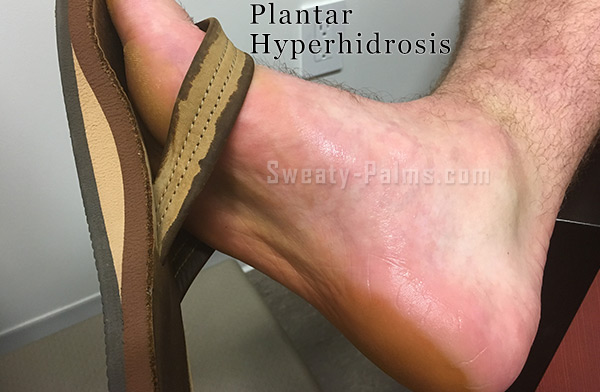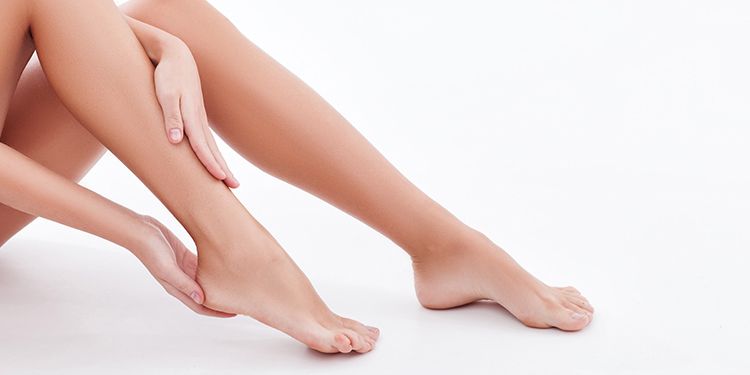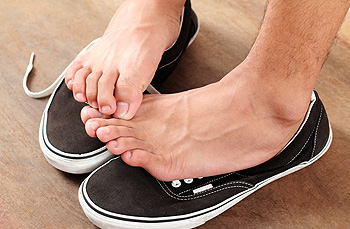Recognizing Excessive Sweating: Dermatology Insights on How to Stop Sweaty Hands
Recognizing Excessive Sweating: Dermatology Insights on How to Stop Sweaty Hands
Blog Article
Revealing the Intricacies of Excessive Sweating: A Comprehensive Guide to Diagnosis and Monitoring
Extreme sweating, clinically known as hyperhidrosis, is a condition that affects a significant number of individuals and can have a profound influence on their quality of life. While sweating is a natural physical feature, its overactivity in hyperhidrosis offers a distinct collection of difficulties that typically go beyond mere discomfort.

Comprehending Hyperhidrosis Causes
Hyperhidrosis creates can be attributed to numerous elements such as genetics, hormonal inequalities, and certain clinical conditions. Genetics play a significant duty in key focal hyperhidrosis, where individuals acquire the problem from their relative. This type of hyperhidrosis usually shows up in details areas like the palms, soles of the feet, underarms, and face. Hormone imbalances, especially an overactive thyroid gland or menopausal changes, can additionally activate extreme sweating. In addition, specific clinical conditions such as diabetes, cardiovascular disease, and infections can result in second generalised hyperhidrosis. These underlying health concerns can disrupt the body's natural air conditioning system, triggering the sweat glands to end up being overactive. Comprehending the source of hyperhidrosis is vital in identifying and properly managing this problem. By recognizing the certain elements contributing to excessive sweating, health care service providers can customize treatment plans to deal with the underlying reason, offering relief and boosting the high quality of life for people impacted by hyperhidrosis.
Acknowledging Hyperhidrosis Symptoms

Moreover, hyperhidrosis signs might show up in emotional and social distress, as individuals might really feel ashamed or anxious concerning their sweating, resulting in avoidance of social scenarios (Treatment for hyperhydrosis of hands and feet). In addition, repeated episodes of excessive sweating can cause skin maceration, fungal infections, and a total reduction in self-esteem
Diagnostic Refine for Hyperhidrosis
Initiating the diagnostic process for too much sweating includes extensive evaluation of the person's case history and checkup. Asking about the beginning, period, and causes of sweating episodes is vital to distinguish in between primary focal hyperhidrosis and second generalised hyperhidrosis. Case history must also include inquiries concerning medicines, clinical conditions, and household background of hyperhidrosis.
During the physical exam, certain interest is paid to the locations influenced by sweating. The doctor might examine the level of sweating, check for indications of underlying problems, and evaluate the impact of sweating on the person's quality of life. Furthermore, specific examinations like the gravimetric test, starch-iodine test, or skin conductance dimensions might be performed to quantify the amount of sweat created.
Furthermore, in cases where secondary hyperhidrosis is thought, extra examinations such as blood examinations, pee examinations, and imaging research studies may be recommended to determine the underlying reason for too much sweating. The analysis procedure aims to precisely figure out the kind and source of hyperhidrosis to assist proper management methods.
Treatment Options for Hyperhidrosis
When dealing with excessive sweating, various treatment choices are offered Bonuses to minimize symptoms and enhance the individual's lifestyle. The treatment approach for hyperhidrosis depends on the intensity of signs and the individual's reaction to preliminary therapies.
Topical therapies, such as aluminum-based antiperspirants, are often advised as the first line of protection for managing light instances of hyperhidrosis. For people with more Bonuses serious symptoms, oral drugs like anticholinergics may be prescribed to aid decrease sweating.

Effective Monitoring Strategies
To successfully take care of hyperhidrosis, a individualized and extensive treatment plan customized to the patient's specific needs and reaction to previous therapies is important. This plan may incorporate a combination of therapeutic strategies, consisting of way of living alterations, topical therapies, oral medicines, botulinum toxic substance injections, iontophoresis, and in serious situations, surgical interventions like sweat gland elimination or sympathectomy. Lifestyle adjustments such as wearing moisture-wicking clothing, utilizing antiperspirants, and exercising stress-reducing techniques can complement clinical interventions. Topical antiperspirants containing light weight aluminum chloride are commonly the first-line therapy, with stronger solutions offered for resistant instances. Oral medicines like anticholinergics may be suggested for generalised hyperhidrosis. Botulinum toxin shots work for focal hyperhidrosis, supplying temporary alleviation by obstructing the release of acetylcholine. Iontophoresis, entailing making use of Visit Your URL a low electrical existing to decrease gland activity, can be beneficial for both palmoplantar and axillary hyperhidrosis. Surgical alternatives are commonly booked for severe, refractory instances and require mindful consideration of risks and benefits. A multidisciplinary method entailing dermatologists, medical care doctors, and, if necessary, specialists, can maximize the management of hyperhidrosis.
Final Thought
To conclude, hyperhidrosis is a condition identified by too much sweating, which can significantly influence a person's lifestyle. By recognizing the reasons, identifying the signs, and going through the analysis process, health care carriers can successfully handle this condition. Therapy choices consist of topical medications, dental medications, shots, and also procedures in severe instances. With correct diagnosis and monitoring methods, people suffering from hyperhidrosis can find relief and boost their total health.
Extreme sweating, medically recognized as hyperhidrosis, is a problem that impacts a significant number of individuals and can have an extensive impact on their top quality of life. By determining the certain aspects contributing to excessive sweating, medical care carriers can customize therapy strategies to deal with the underlying reason, using relief and boosting the quality of life for people influenced by hyperhidrosis.
Hyperhidrosis, defined by too much sweating beyond what is essential for controling body temperature level, can substantially impact a person's top quality of life. Asking about the beginning, period, and triggers of sweating episodes is critical to separate in between primary focal hyperhidrosis and second generalized hyperhidrosis. Exessive Sweating.In final thought, hyperhidrosis is a problem characterized by extreme sweating, which can significantly influence a person's quality of life
Report this page